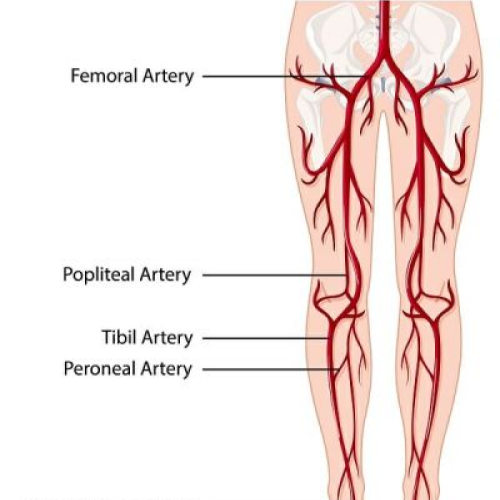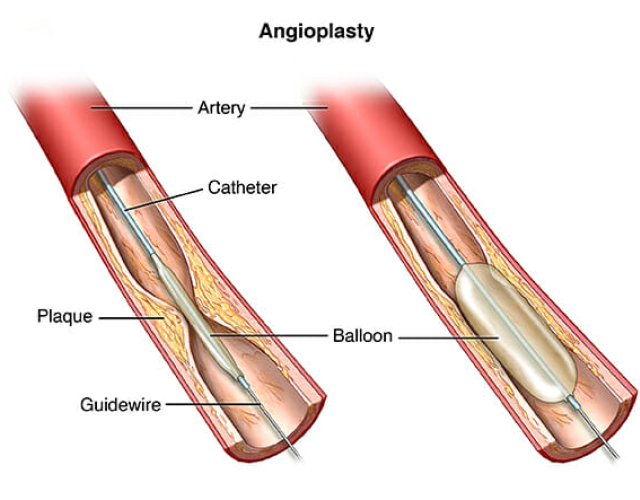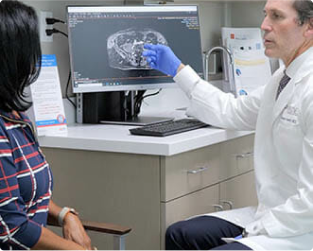Arterial Disease Treatments
Treatment for Peripheral Arterial Disease & Non-Healing Ulcers
The treatment for peripheral arterial disease (PAD) and, in turn, non-healing ulcers has two main goals. One is to manage the symptoms, including leg pain, allowing you to resume your normal physical activities. The second one is to top the progression of atherosclerosis in the body, which reduces the risk of stroke and heart attack.
In addition to recommending lifestyle changes such as getting regular exercise and eating a healthy diet,
Pedes Orange County provides a comprehensive array of treatments to slow the progression of peripheral artery disease (PAD). These treatments are designed to improve blood flow and prevent complications, thereby addressing non-healing ulcers and wounds effectively.
Our medical team uses advanced diagnostic techniques and personalized care plans to ensure optimal outcomes for each patient. By combining the following medical interventions with lifestyle modifications, we aim to enhance overall vascular health and quality of life.

Atherectomy
A lower extremity atherectomy is a minimally invasive surgical procedure involving a catheter to remove plaque from arteries. The doctor usually makes a small incision in the artery to insert the catheter. The procedure is performed under local anesthesia to prevent pain. A catheter collects removed plaque in a chamber placed at its tip, ensuring that all the particles are removed from the artery. Depending on the amount of plaque in your arteries, your doctor will repeat the procedure several times to ensure optimal blood flow.
Angioplasty
Also called percutaneous transluminal Angioplasty (PTA), Angioplasty is a medical procedure performed using a catheter. A catheter is usually a thin, flexible tube inserted through an artery and guided by imaging to the narrowed section of the artery. Once the tip of the catheter reaches the narrowed section, the small balloon at the end inflates for a short period. The pressure created by the inflated balloon usually presses the plaque against the artery wall. This procedure will help to widen the arteries, restoring normal blood flow.

Stenting
Stenting is a procedure that is performed in combination with angioplasty and atherectomy. Years of plaque buildup damages the artery walls. Even after cleaning the artery, the walls are often too weak to stay open. Stenting is a procedure that helps support the blood vessel walls, preventing them from closing after removing the plaque. The procedure involved placing a small mesh tube inside the artery to offer rigid support.
Disease Treatment Near Me in Irvine, CA
If you’re suffering from arterial disease, don’t hesitate to get in touch with our vascular experts today.
Get in touch with Pedes Orange County in Irvine, CA, at (949) 387-4724 to schedule an appointment with one of our dedicated specialists or contact us online at any time. We’re eager to provide you with more information about our specialized arterial disease treatments.
Contact Us Today


Our Vascular Disease Physicians
The physicians at Pedes Orange County devote their lives to saving limbs and minimizing pain. Our conveniently located, state-of-the-art facility is designed for your comfort and utilizes cutting-edge technology to provide minimally invasive treatments. Our vascular specialists are board-certified and some of the best in Southern California. Personable staff members make every visit a positive experience, with short wait times and an efficient, streamlined process that ensures you leave feeling educated and confident that you are in good hands.

J. Joseph Hewett, M.D.
Vascular Specialist

Neil K. Goldstein, M.D.
Vascular Specialist

Derrick Tran, MD
Vascular Specialist

Mohammad Jaber, M.D.
Vascular Specialist
Why Pedes Orange County?
The vascular specialist at Pedes Orange County are committed to offering multidisciplinary care that ensures each patient gets the best treatment for their condition. With a dedicated team of experts with broad experience, we are one of the few medical facilities in the country that offers treatments for peripheral artery disease (PAD). Committed to your overall well-being, we ensure comprehensive care that extends beyond your visits to our clinic. In addition to providing you with the tools and resources you need to maintain your health, we offer regular follow-up appointments that enable us to closely monitor your progress.
What to Expect from Your Visit to Pedes

Ultrasound
Advanced ultrasound-guided examination techniques will be used to visualize the veins, arteries, or both, in your legs. This is often used in the diagnostic process to detect the presence and extent of disease.

Consult
Once we review the results of your diagnostic tests, our physicians will collaborate with you to develop a personalized treatment plan, ensuring the best course of treatment for your specific condition.

Treatment
Your treatment plan will be personalized to you and your individual needs. At Pedes, we specialize in minimally invasive procedures and nonsurgical treatments, all of which are performed by our dedicated vascular physicians within the comfort of our state-of-the-art facility.

Follow up
We ensure our patients receive continuous care and support with regular follow-up visits. Each follow-up visit is scheduled at the time of your in-office appointment. Should you have a concern between
appointments, we encourage you to call our office and get scheduled at any time.

Vascular Disease
Pre-register for your visit to Pedes Orange County by downloading our patient forms.






